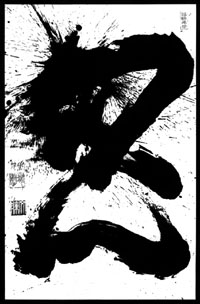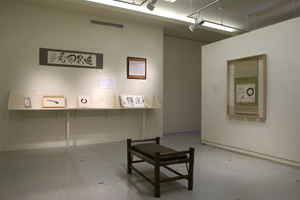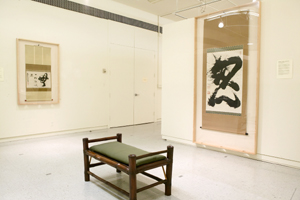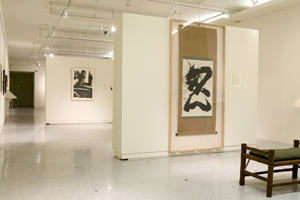Gallery #1
ZEN CALLIGRAPHY - A BRIEF HISTORY
For more hundreds of years, the art of writing with a brush, an art imported from China, has been an important part of Zen practice in Japan. Zen dominated Japanese culture from the 14th to the 16th century. Zen monks advised the government, trained the military in discipline, educated the elite, and infused every form of aesthetic endeavor with the principles of profound simplicity.
All this changed in the 17th century when the Tokugawa shogunate decided to use a Confucian rather than a Buddhist system to regulate society. Isolated from the establishment, Zen monks began developing art forms as personal meditations. This new form of energetic brushwork came to be called Zenga. While the sacred art of most spiritual traditions rely on traditional formulations, exact proportions, and highly controlled precision, Zenga developed as personal, spontaneous, immediate. The forms have dramatic simplicity, intense energy, and usually are rendered rapidly.
They are made as a meditation, and offered as visual teachings. Painted subjects include portraits of teachers, nature scenes, and the Goddess Kannon. Calligraphy subjects usually are poems or koans - paradoxical propositions that cannot be understood rationally only intuitively.
Compared with other forms of Asian art, Zenga has been regarded by many as not only inelegant but rather crude.
It has only been since the popularity of abstract art in the mid 20th century that a growing number of collectors and curators in the West, and in Japan, have become seriously interested in Zenga as art. However, modern artists in the West have been interested in Zen art, especially Zen calligraphy, for much longer. In this Gallery #1, we see the kind of semi-abstract art that inspired many modern painters and printmakers for much of the 20th century.
Unlike abstract art, these images are verbal communications expressed in visual ways. The Japanese language does not have words in the Western sense, and is written as a series of ideograms. There are thousands of such ideograms. Each ideographic image has a meaning, somewhat like Western words have meanings, but each written character is open to wider interpretation.
In the hands of an artist, the visual form of a ideogram can give expression to its meaning, just as intonation helps to define meaning when speaking this language.
The rest of this exhibition is devoted to the work of artists who worked under the inspiration of Zen art, and sometimes Zen philosophy, a non-authoritarian way to understand and experience the world that sets aside all forms of religious dogma and concentrates on direct experience.




